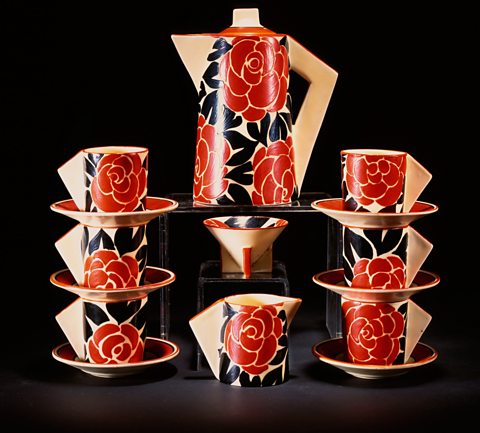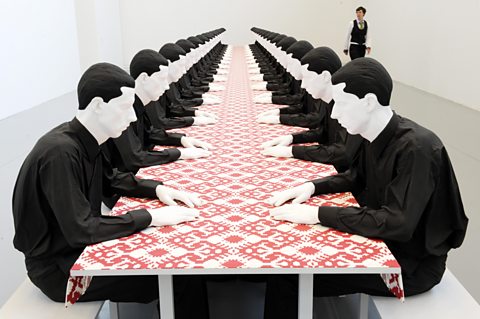Repetition
Repeating similar elements brings unity to a composition. Repetition is most clearly seen through the creation of patterns. In design, repetition is a key part of branding.

Andy Warhol often created prints made from multiple images repeated in a regular grid. Soup Cans (1962) recreates the effect of mass-produced commodityA basic item or substance that can be bought, sold or traded. stacked together as if on a supermarket shelf. Repetition creates unity and also reflects ideas about modern society.

The lined-up terracottaFrom the Italian for 'baked earth'. This is a type of porous, clay-based ceramic. Also refers to the orange-brown colour of the ceramic. warriors (246-210 BC) of Emperor Qin create a similar regular and orderly effect.
Here repetition of similarly sized and dressed figures all facing the same direction creates a united army. The result is a clear display of prestige and power.


Repetition is a key part of creating a sense of unity between different products that form a particular range.
The Latona Red Roses tea set designed by Clarice Cliff (c.1930) is united through repetition of a floral pattern and the angular handles and spout.


For the Team GB kit for the 2012 Olympics, Stella MacCartney needed to design clothing that would function effectively for individual performers in a variety of sports. But the range of outfits had to clearly show everyone was part of the same team.
The outfits are united through repetition of colours (dominated by blues, with some white and red) and repeated use of a pattern based on the Union Flag.

Company at the Table (Katherina Fritsch, 1988) has great unity within the artwork due to the repeated human forms all wearing the same clothing. The pattern repeating as it stretches down the length of the table also creates a sense of unity within the work.